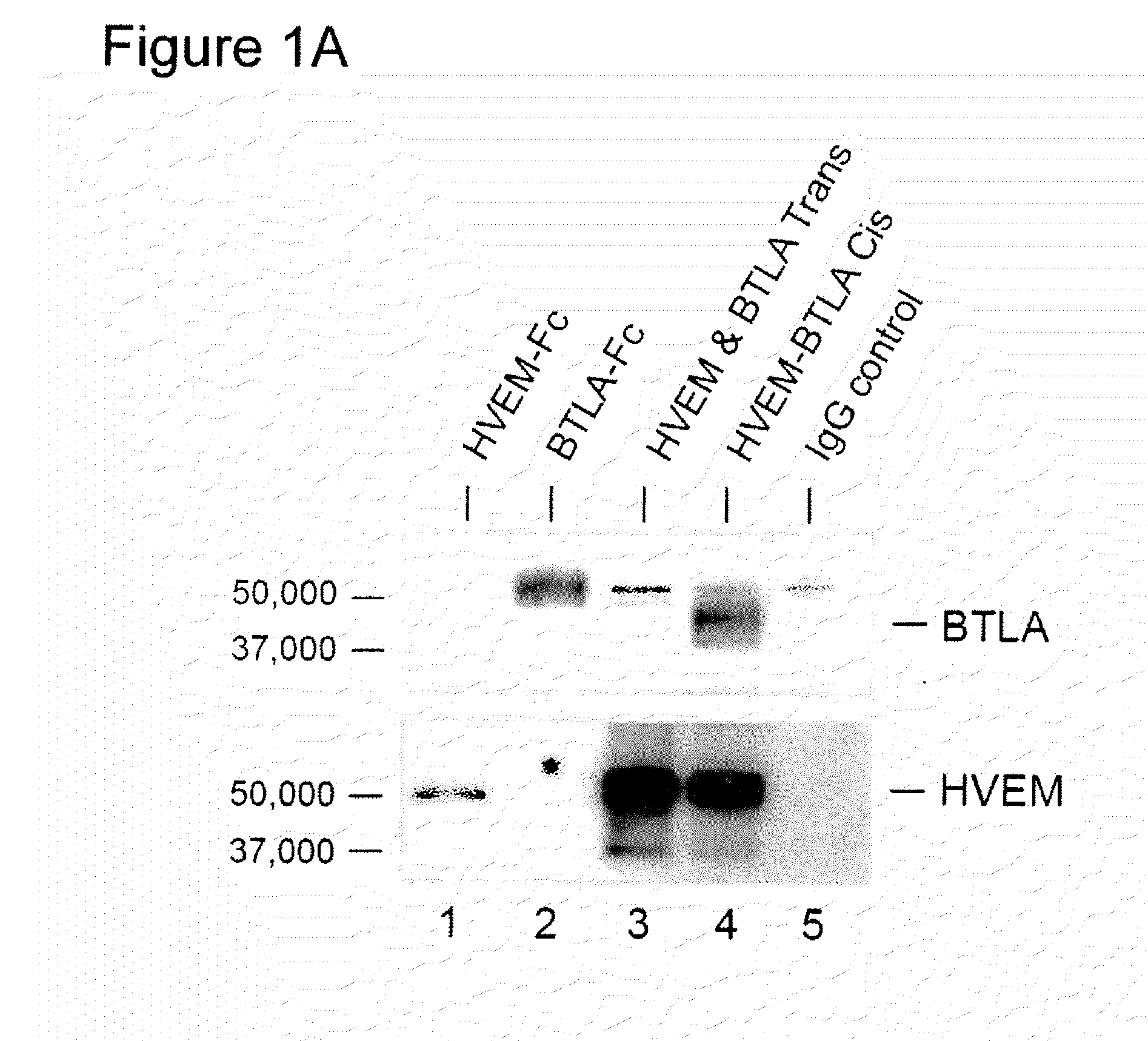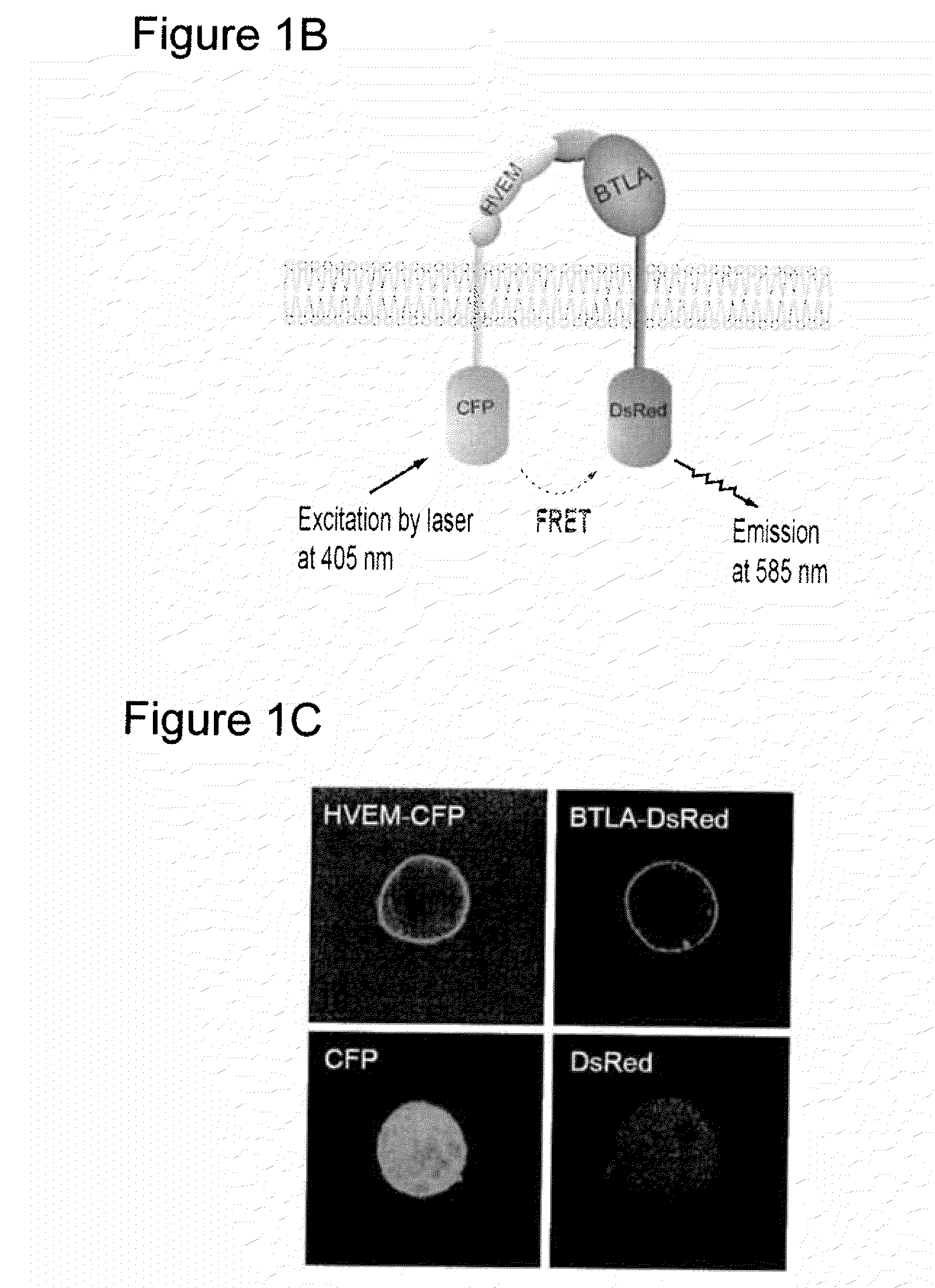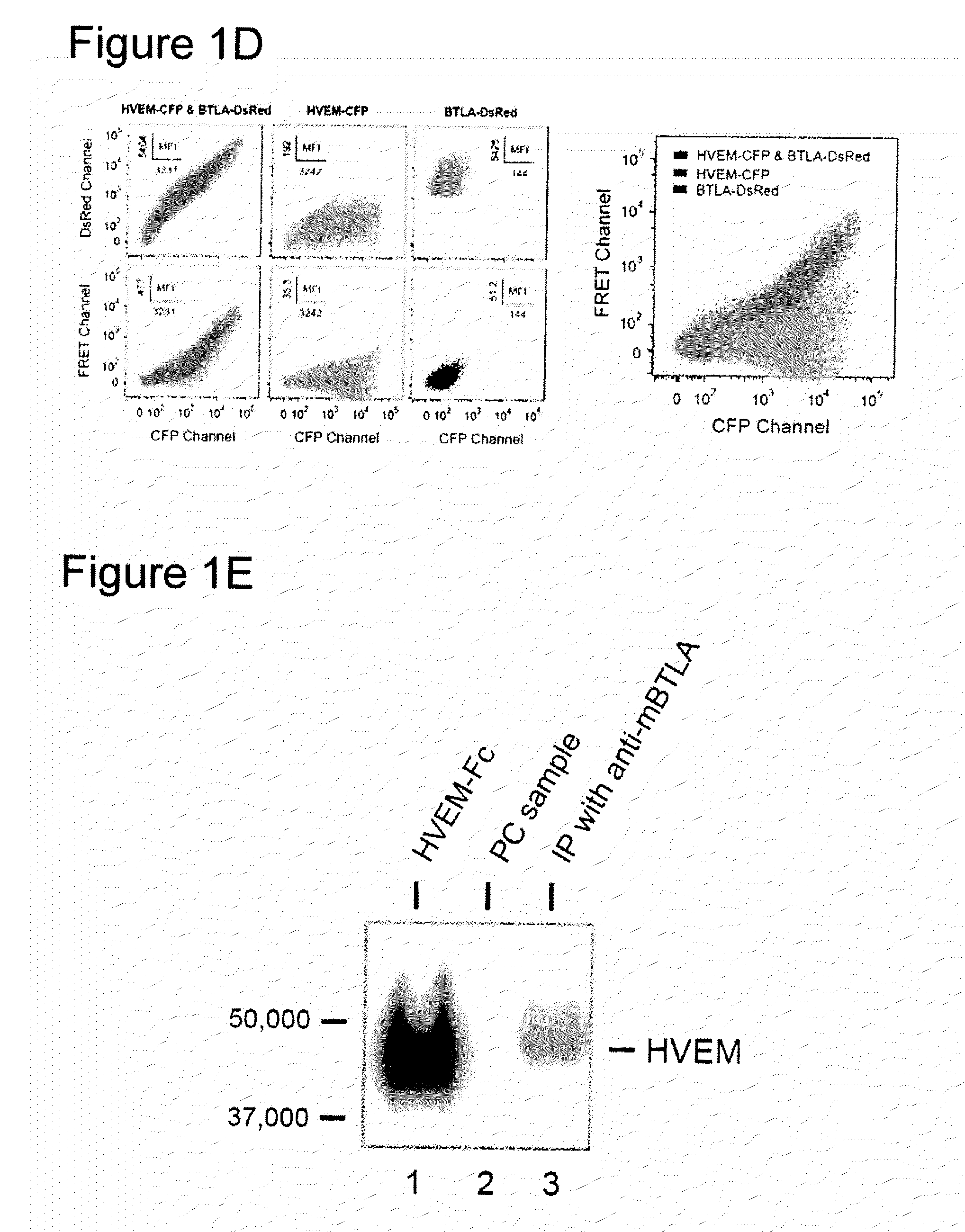Hvem/btla, hvem/cd 160 and hvem/gd cis complexes and methods of use
a cis complex and complex technology, applied in the field of hvem cis complexes, can solve the problems of unsafe application and poorly understood cosignaling pathway
- Summary
- Abstract
- Description
- Claims
- Application Information
AI Technical Summary
Benefits of technology
Problems solved by technology
Method used
Image
Examples
example 1
[0153]This example describes materials and methods used in Examples 2 to 12.
[0154]Reagents and Cell Lines
[0155]Antibodies used included: mouse anti-BTLA mAb (J168, IgG1κ; BD Bioscience, San Diego, Calif.), mouse anti-HVEM mAb (clone 94801, R&D System, Emeryville, Calif.), mouse anti-mouse BTLA mAb (6F7), Armenian Hamster anti-HVEM mAb (LH1), mouse anti-human HVEM (eBioHVEM-122), and mouse anti-human BTLA (MIH26) (eBioscience, San Diego, Calif.); mouse anti-FLAG mAb (M2 clone, Sigma-Aldrich, St. Louis, Mo.), rabbit-anti-RelA / p65 Ab (C-20), anti-RelB (C-19) and anti-TRAF3 Ab (H-122) (Santa Cruz Biotechnology) and rat anti-TRAF2 mAb (6F8 clone, MBL, Nagoya, Japan). Rat anti-BTLA mAb (6F4, IgG1κ), goat anti-HVEM and anti-LTβR IgG were made in-house against purified receptor Fc proteins as described (Rooney, et al., Methods Enzymol 322:345 (2000)). Purified Fc fusion proteins: HVEM-Fc, BTLA-Fc and LTβR-Fc, of mouse or human origin, were produced and purified as described (Cheung, et al.,...
example 2
[0166]This example includes studies showing expression patterns of intrinsic BTLA and HVEM complex in T cells.
[0167]The possibility that HVEM and BTLA act in cis, implicated T cells may coexpress HVEM and BTLA. The expression patterns of HVEM and BTLA in mouse and human naïve T cells isolated from spleen or peripheral blood, respectively using specific mAb were studied. Indeed, the vast majority of CD3+ T cells obtained from human and mouse coexpressed HVEM and BTLA, suggesting a pattern of expression conserved across species. Both major subsets of mouse T lymphocytes coexpressed HVEM and BTLA with CD4 T cells expressing relatively more BTLA than CD8 T cells.
example 3
[0168]This example includes studies showing Cis-interaction between HVEM and BTLA.
[0169]Dendritic cells, and T and B lymphocytes depending on their state of activation, coexpress HVEM and BTLA (De Trez, et al., J Immunol (2008) 180:238; Sedy, et al., Nat Rev Immunol (2005) 8:861) indicating the potential for ligand receptor complex formation in cis. To determine whether HVEM and BTLA form a complex when coexpressed in the same cells, 293T cells were transfected with BTLA, HVEM or both, and HVEM immunoprecipitated from lysates with aid of a Flag-epitope tag (HVEM-Flag). BTLA specifically coimmunoprecipitated with HVEM-Flag in cells coexpressing HVEM and BTLA (FIG. 1A, lane 4). In contrast, BTLA did not associate with HVEM when immunoprecipitated from a mixture of HVEM expressing 293T cells (293T-HVEM) and BTLA expressing 293T cells (293T-BTLA) (FIG. 1A, lane 3). This result indicated HVEM-BTLA forms a stable complex in cis, but not in trans.
[0170]To measure HVEM and BTLA interactions...
PUM
| Property | Measurement | Unit |
|---|---|---|
| concentrations | aaaaa | aaaaa |
| soluble | aaaaa | aaaaa |
| stable | aaaaa | aaaaa |
Abstract
Description
Claims
Application Information
 Login to View More
Login to View More - R&D
- Intellectual Property
- Life Sciences
- Materials
- Tech Scout
- Unparalleled Data Quality
- Higher Quality Content
- 60% Fewer Hallucinations
Browse by: Latest US Patents, China's latest patents, Technical Efficacy Thesaurus, Application Domain, Technology Topic, Popular Technical Reports.
© 2025 PatSnap. All rights reserved.Legal|Privacy policy|Modern Slavery Act Transparency Statement|Sitemap|About US| Contact US: help@patsnap.com



